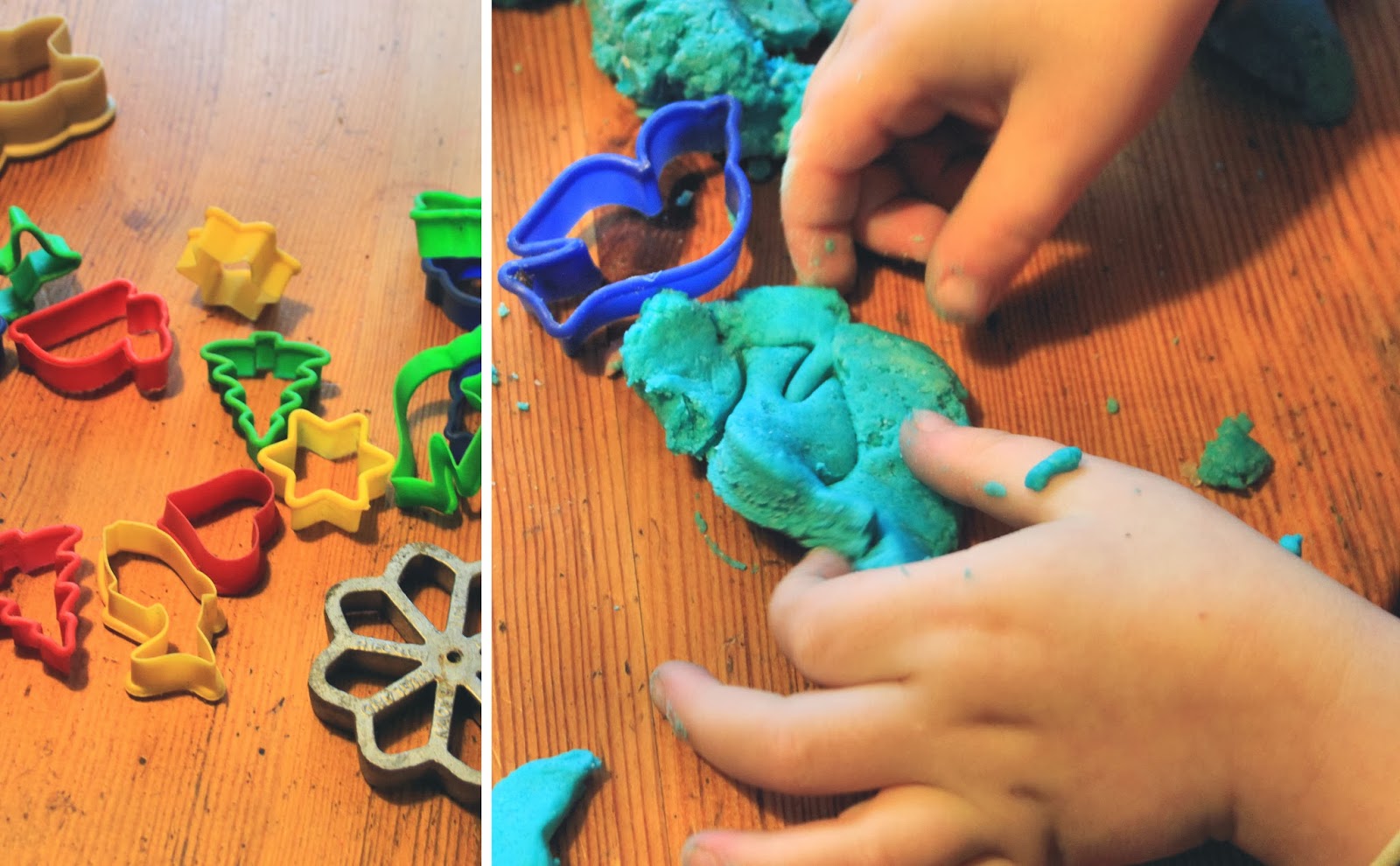 Things are always
different when we're at my parents' place. They live on a four acre
permaculture smallholding and for an HSP (that's a whole other blog
post waiting to happen) it's so much easier for me there. This
morning I felt capable of making playdough. It's been a long time.
I'm not sure if I've ever made it with my children, but I have great
memories of it as a child, the smell of it, the salty taste on my
hands, making all sorts of shapes and things with it. Since
three-year-old Ben's teacher had just recommended him playing with
playdough to strengthen his hands for writing it seemed like the
perfect time.
Things are always
different when we're at my parents' place. They live on a four acre
permaculture smallholding and for an HSP (that's a whole other blog
post waiting to happen) it's so much easier for me there. This
morning I felt capable of making playdough. It's been a long time.
I'm not sure if I've ever made it with my children, but I have great
memories of it as a child, the smell of it, the salty taste on my
hands, making all sorts of shapes and things with it. Since
three-year-old Ben's teacher had just recommended him playing with
playdough to strengthen his hands for writing it seemed like the
perfect time.
I wanted to find a
recipe that didn't include cream of tartar, because I was sure we
wouldn't have that in the house, and I don't remember it being in the
recipe as a child. Luckily I found one on the Cbeebies site that was
perfect.
A bit awkward that it was in cups (and surprising for a British site)
but we had some measuring cups in the drawer, so it was all good.
Once we'd mixed the salt, flour, and cornflour I split the mixture in
half and coloured half of it red and half blue.
The children had plenty
of fun helping me make the dough, and the fun continued once it was
kneaded into balls and out on the table. With the help of the cutters
I used as a child and various other kitchen bits and bobs they have
spent the morning making shapes, mountains, babies in cradles, graves
for their Lego men (that was George. He has an interesting mind),
pancakes and ice cream.
 For an added bonus,
while I had the cornflour out, I decided to introduce them again to
non-Newtonian fluids, which flow when they're not under pressure but
go hard when force is applied. We've shown Oscar and George this
before, but I don't think they remembered. I mixed a bowl of
cornflour with a little water and put it on the table to show them
how it worked. Ben was a little freaked out at first, but Oscar and
George were fascinated and George spent at least three quarters of an
hour deeply engrossed in this single bowl of cornflour. Now Ben is
pretending it's Mount Doom from Lord of the Rings and is digging it
out onto the table.
For an added bonus,
while I had the cornflour out, I decided to introduce them again to
non-Newtonian fluids, which flow when they're not under pressure but
go hard when force is applied. We've shown Oscar and George this
before, but I don't think they remembered. I mixed a bowl of
cornflour with a little water and put it on the table to show them
how it worked. Ben was a little freaked out at first, but Oscar and
George were fascinated and George spent at least three quarters of an
hour deeply engrossed in this single bowl of cornflour. Now Ben is
pretending it's Mount Doom from Lord of the Rings and is digging it
out onto the table.
We got a little science in with this, discovering
that these fluids work as they do because on the microscopic level
you have little grains of solid in a suspension in a liquid. When the
fluid moves slowly the particles can move past one another, but under
impact there's no time for the particles to move aside and make way,
and so they behave like a solid.
Of course as an HSP
parent I'm exhausted now and they're still going strong four or five hours later. There's
playdough everywhere. But they're having fun, and that's what counts.


